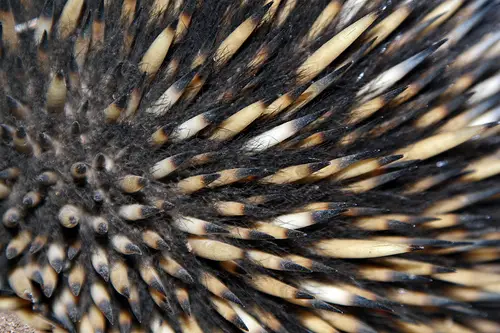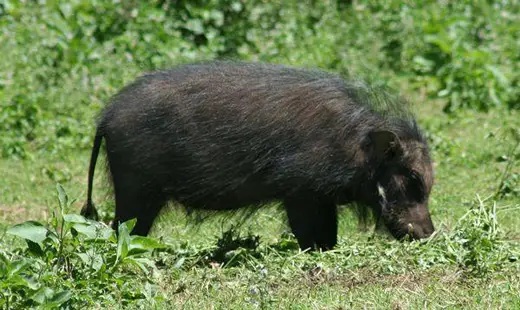Short-beaked Echidna
The short-beaked echidna is also known as the spiny anteater as it likes eating ants and termites. The echidna is famous for having a body that is covered with spines or spikes. It also has a distinctive snout and a special tongue that can catch its prey quickly.
The short-beaked echidna is between 30-45 cm in length, and has a snout that is about 75mm long. It weighs 2 to 5 kg on average. Its head and body almost looks as if it is combined together, as its neck is not entirely noticeable. Short-beaked echidnas have small eyes, and its mouth cannot open wider than 5 mm. Its body is covered by fur and cream coloured spines. These spines are composed of keratin, and may be 50mm long.
These creatures have a body temperature of about 31-32oC. However, it does not sweat and finds shelter during hot weather. In the autumn and winter time, the short-beaked echidna goes into hibernation. When it is either too hot or too cold, the echidna becomes sluggish.
As mentioned above, it eats ants and termites. Short-beaked echidnas also eat grubs, worms, and larvae. Its snout can actually sense its prey and once the prey have been detected, the Echidna uses its claws and limbs to dig into the soil to find food. Using its long and sticky tongue, it licks the invertebrates up. They also have horn-like pads in their mouth and at the back of their tongue so they can grind up their prey.
Short-beaked echidnas are commonly found in Australia and in the highlands of southern New Guinea. They live in an a habitat that has lots of ants or termites. When they are attacked by their predators such as wild cats, dogs, and goannas, the echidnas use their defense tactics in order to save themselves. They either run away or just curl into a ball, which exposes their spines. In some cases, echidnas may dig into the soil or cram themselves into a log and expose only their spines.
They are mammals who lay eggs. During the mating season, female short-beaked echidnas will develop a pouch. A few weeks later, she will dig a burrow and lay eggs into this pouch. Hairless and blind baby echidnas are called puggles, and they hatch and suck the milk patch inside their mothers pouch. Puggles will develop their spines between 8 to 12 weeks after they have hatched. It will then stay in their family burrow and continue to suckle for the next 6 months. It has been reported that wild short-beaked echidnas can live up to 45 years in the wild.





You failed to mention that this animal is also found in Africa, Nigeria to be specific.
Echidnas are endemic to Australia and New Guinea. Perhaps you are thinking of a hedgehog (eg African hedgehog)?